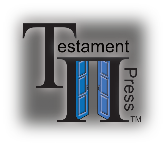Chapter 14 of The Bridge to the New Testament describes many of the different types of money used in inter-testament and New Testament times. We discuss the history of the money used by the Jews, the different denominations of ancient money, the debasement of money, conversions among the various monetary systems of the time, how money was used in the New Testament, and the appearance of ancient money. To get a copy of the book, click the "Products" tab above.
The calculator below may be used to see how the United States dollar compares to the currencies used by Jewish, Greek, and Roman civilizations. It may also be used to see how these currencies relate to each other. To use the calculator, enter a value in any field and all the other values will be automatically calculated. The four tables at the bottom of this page also give a description of the relationships among the various pieces of money. Note that there is no correlation across rows in the calculator--a lepton does not equal a hemiobol nor a uncia. However, each of these is the smallest denomination for its respective culture.
We have derived the number of US dollars based on the Roman work day. During late inter-testament and New Testament times, this was six hours, and a denarius was paid for this days' wage for an unskilled worker. Based on the United States federal minimum wage of $7.25 (the proxy we have chosen for an unskilled wage), that would be $43.50 per day (for six hours). Therefore, one Roman denarius would be $43.50 (try putting $43.50 in the US Dollars field below and see that it does equal one denarius). The minimum wage value may be changed below whenever it changes at the federal level (or if you live in a community with a higher minimum wage than the federal one) to see how the calculated value of dollars is affected. Note that the value of US dollars calculated should be used only as a coarse approximation of the value of these pieces of money.
US Dollars
$
Minimum Wage
$
Jewish Money
Lepton (134 BC-AD 6)
Lepton (AD 6-AD 70)
Prutah (134 BC-AD 6)
Prutah (AD 6-AD 70)
Gerah
"Fourth of a Shekel"
Bekah
Pim
Shekel
Jewish Mina
Talent (Jewish)
Heavy Talent (Jewish)
Greek Money
Hemiobol
Obol
Litra
Trihemiobol
Diobol
Triobol
Tetraobol (Tetrobol)
Drachm
Didrachm
Stater (Silver)
Stater (Gold)
Tetradrachm
Pentadrachm
Octadrachm
Decadrachm
Greek Mina
Talent (Greek)
Roman Money
Uncia (Minted during Republic)
Quadrans
Triens (Minted during Republic)
Quincunx (Minted during Republic)
Semis
As
Dupondius
Sestertius
Quinarius (Silver)
Denarius
Cistophorus
Quinarius (Gold)
Aureus
Talent (Roman)
| Name | Equivalence | Description |
|---|---|---|
| {{ money.name }} |
|
|
* If a denarius was paid for 6 hours of work (see Conversions between Monetary Systems in The Bridge to the New Testament), then a shekel was paid for 24 hours of work (since there are four denarii per shekel). 24 hours is 1440 minutes, and there are 512 lepta per shekel (assuming the Roman period from AD 6-70). Therefore:
| Name | Equivalence | Description |
|---|---|---|
| {{ money.name }} |
|
|
* Some other smaller denominations than the obol are mentioned in some of the literature, such as the hemitetartemorion (1/2 tetartemorion [1/8 obol]), the tetartemorion (1/4 obol), the trihemitetartemorion (3/2 tetartemorion [3/8 obol]), and the tritartemorion (3 tetaremorions [3/4 obol]).
| Name | Equivalence | Description |
|---|---|---|
| {{ money.name }} |
|
|
* Coins of the Early Republic not minted by the time of the New Testament.
| Base Unit | Equal To | Approx. Value* ($US 2016) |
Notes |
|---|---|---|---|
| Jewish Lepton |
|
$0.34 |
|
| 1 Jewish (Tyrian) Shekel |
|
$43.50 |
|
| Jewish or Tyrian Shekel |
|
$174.00 |
|
| Jewish Talent |
|
$522,000.00 |
|
* Based on a six hour work day at $7.25/hour minimum wage.
